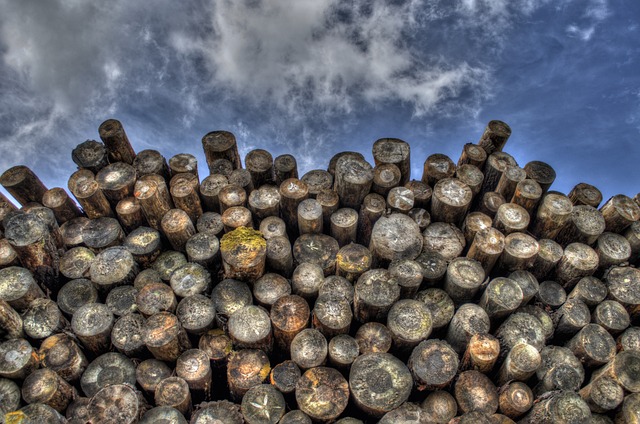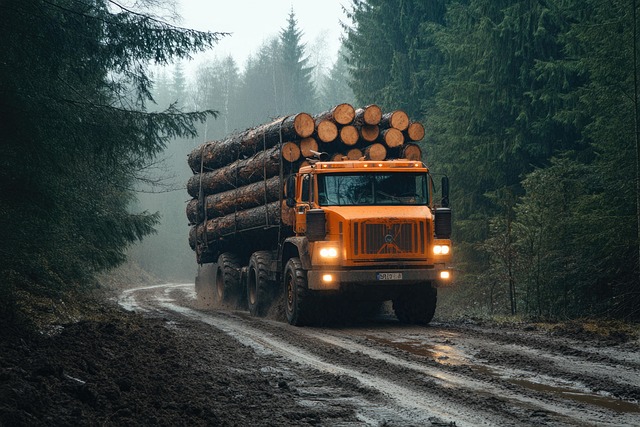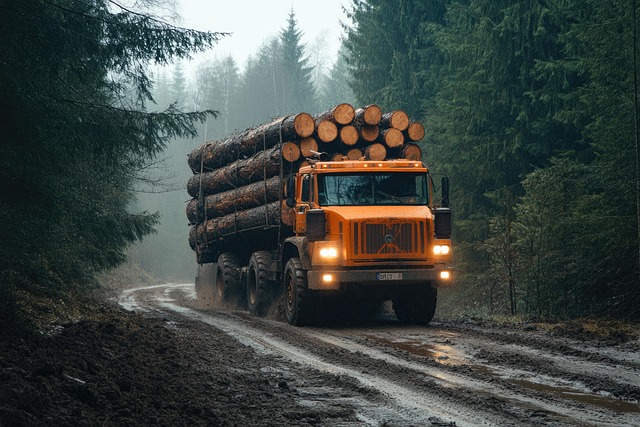The timber industry in Lane County, Oregon, has historically driven economic growth and shaped its culture, peaking in the 19th and early 20th centuries. Facing decline, the sector is now undergoing a significant transformation with younger generations entering, guided by retiring workers and evolving labor laws. Technological advancements have shifted traditional logging practices towards precision-oriented methods, improving safety and sustainability. Lane County's timber industry adapts to modern standards, ensuring longevity through digital mapping, data analytics, and advanced machinery. Balancing ecological preservation with economic timber production, the county embraces sustainable forestry practices, collaborative efforts, and innovative projects for long-term viability. Investing in training programs specializing in sustainable forestry, wood products manufacturing, and green building construction will secure Lane County's economic landscape for future generations.
The timber industry has long been a cornerstone of Lane County, Oregon’s economy, shaping its history and workforce. This article delves into the evolution of this sector, exploring its historical perspective, changing demographics, and the impact of technological advancements. We examine environmental concerns and the evolving role of foresters, while also looking ahead to future prospects, focusing on training and skilled labor in a sustainable sector. Discover how Lane County’s timber industry continues to adapt and thrive.
- Historical Perspective: A Glimpse into Lane County's Timber Industry Past
- Changing Demographics: Workforce Composition Over Time
- Technological Advancements and Their Impact on Employment
- Environmental Concerns and the Evolving Role of Foresters
- Future Prospects: Training and Skilled Labor in a Sustainable Sector
Historical Perspective: A Glimpse into Lane County's Timber Industry Past

Lane County, Oregon, has a rich history intertwined with its thriving timber industry. For decades, this sector has been a cornerstone of the local economy, shaping the community and leaving an indelible mark on its culture. The county’s vast forests, once abundant with towering trees, became a haven for loggers and mill workers, driving economic growth and attracting folks from all over.
Historically, the timber industry in Lane County boomed during the late 19th and early 20th centuries, fueled by the demand for lumber in rapidly growing cities across the nation. This period witnessed the establishment of numerous sawmills and logging camps, transforming the landscape and fostering a strong sense of community among the hardworking men and women who called this region home. The industry’s decline in recent years has left a different kind of legacy, prompting a shift towards more sustainable practices and a reevaluation of the county’s economic diversification.
Changing Demographics: Workforce Composition Over Time

Over time, the timber industry in Lane County has experienced a significant shift in its workforce demographics. Historically dominated by men from small logging communities and rural areas, the industry now witnesses a more diverse labor pool. This transformation is not just about gender and regional diversity; it also includes an increase in older workers retiring and a growing interest from younger generations who seek sustainable career options.
The changing face of the timber workforce reflects broader societal trends, such as evolving labor laws, increased awareness of environmental conservation, and advancements in technology that make forestry and logging safer and more appealing careers. As a result, today’s Lane County timber industry employs individuals with varied backgrounds, skills, and perspectives, contributing to its adaptability and growth in an ever-changing market.
Technological Advancements and Their Impact on Employment

In recent years, the timber industry in Lane County, Oregon has undergone a significant transformation driven by technological advancements. Traditional logging practices have given way to more efficient and precision-oriented methods. Automation, such as advanced machinery for felling and harvesting trees, has increased productivity while reducing the need for manual labor. This shift has had a profound impact on employment within the county’s timber sector. While some jobs have been displaced, new roles have emerged, requiring skills in operating and maintaining advanced equipment.
The adoption of technology has also enhanced safety measures, improving working conditions for those still employed in the industry. Real-time tracking and communication devices enable better coordination among workers, ensuring efficient operations while minimizing risks. Furthermore, digital mapping and data analytics are now used to optimize forest management, leading to more sustainable harvesting practices. As a result, Lane County’s timber industry is not only evolving but also adapting to meet modern standards, ensuring its longevity in an increasingly technological landscape.
Environmental Concerns and the Evolving Role of Foresters

In recent years, the timber industry in Lane County, Oregon has been navigating a complex landscape where environmental concerns play a significant role in shaping its future. As public awareness about sustainability and conservation grows, so does the demand for responsible forestry practices. Foresters in Lane County are increasingly called upon to balance the economic value of timber production with the preservation of ecological integrity. They are adopting advanced techniques and technologies to monitor forest health, mitigate habitat degradation, and promote sustainable harvesting methods.
This evolving role involves close collaboration with environmental organizations, local communities, and government agencies. Foresters are engaged in innovative projects that include reforestation efforts, wildlife habitat restoration, and the implementation of comprehensive ecosystem management strategies. By embracing these changes, the timber industry in Lane County is not only addressing pressing environmental concerns but also ensuring its long-term viability in a rapidly shifting economic and regulatory environment.
Future Prospects: Training and Skilled Labor in a Sustainable Sector

The future prospects for the timber industry in Lane County, Oregon, lie in its ability to adapt and embrace sustainability while training a skilled workforce. As environmental consciousness grows, there is an increasing demand for eco-friendly practices within the sector. This shift presents an opportunity for local businesses to specialize in sustainable logging techniques, forest restoration, and value-added wood products manufacturing. Investing in training programs can help meet the changing industry needs, ensuring a competent labor force equipped with the latest skills.
By fostering partnerships between educational institutions, local industries, and government bodies, tailored training initiatives can address specific challenges. These programs could include sustainable forestry practices, advanced woodworking technologies, and green building construction methods. Such specialized knowledge will empower workers to contribute to a thriving timber industry that is environmentally responsible, ensuring the long-term viability of Lane County’s economic landscape.
